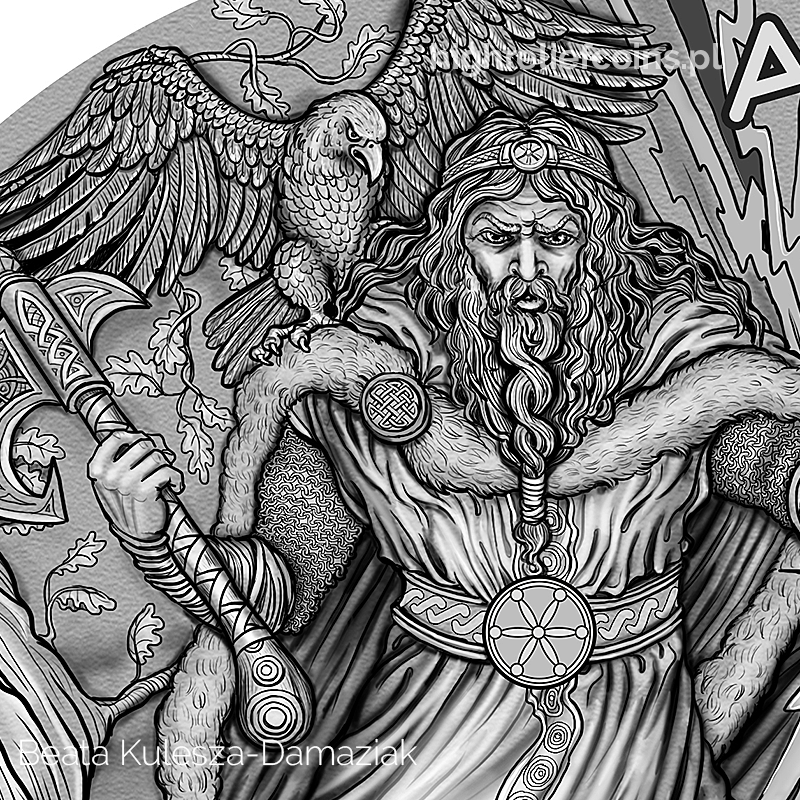Perun, Slavic Gods series, Niue 2018, 2 dollars, 2 oz, 50 mm, antique finish high relief coin, oak insert, client: Mint of Poland, producer: Mint of Poland.
***
Perun was for the Slavs, like Zeus or Jupiter for the ancient Greeks and Romans. He was the supreme god in Slavic mythology, the ruler of the heavens, storms, thunder and lightning. He lived in the oak forests. The oak was considered a sacred tree by Slavs — it symbolized the strength, life and longevity.
“Piorun” in Polish means lightning.
The attributes of Perun are: lightning, arrows (like lightning), oak, Slavic ax, and eagle—the king of the sky. The wolf symbolizes Veles, the god of the Slavic underworld defaeted by Perun.
Some scientists suggest Perun’s analogies with Thor—Germanic or Norse god of thunder and storm. It’s probably due to appearance of the Varangians (Scandinavian Vikings) Kievan Rus’ (today areas of Ukraine and Russia). Originally there were no statues devoting to Perun. He was a god living only in the trees. First statues of Perun were erected during the time of Vladimir the Great in Kievan Rus’.
The interlace knots under the feet of Perun apparently are not typical for Eastern European culture. This pattern seems to have a Celtic origin. During the great migration of early Middle Ages, Germans from Jutland (or from Scania) drove the Celts out from today’s German territory. However the Celtic culture had a huge impact on these newly arrived Germanic tribes. At the same time, archeologists found the traces of Celtic culture not only in today’s Germany, but also in Slavic Central Europe, including today’s Poland territory and… in the Crimea! These knots are Celtic, German or Slavic? Who knows…
In the next coins in the series I will draw more typical Slavic motifs.




The insert is made of oak wood and was engraved with a Slavic symbol of Perun.

On the obverse we have: an eagle, a large oak tree (two Perun symbols) and a wolf with a bear (two symbols of Veles, defaeted by Perun ). In general eagle, wolf, bear, oak are also the symbols of the slavic primary forest. The iconography of the obverse became so universal and could match other Slavic themes.


